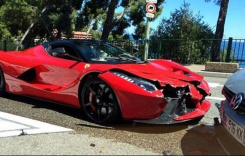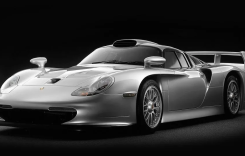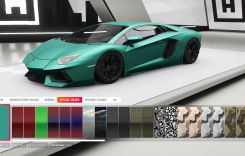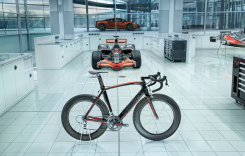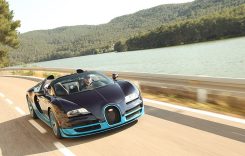It’s a rarity that MotoUSA is granted a exclusive of any manufacturer’s new machine, especially a high-caliber sportbike. But with some proper planning and the perfect sunny SoCal track in Chuckwalla Valley Raceway, Road Test Editor Adam Waheed flexed some muscle to make it happen. Due to Waheed’s recent knee surgery I was lucky enough to have the test fall into my lap (he did some riding as well, don’t worry) and I jumped at the opportunity.
Now it was time to see if the bike wouldn’t disappoint. KTM’s liter-class Twin had some issues in years past, which it claims have all been resolved through ‘a host of minor updates.’ But the question still remained: Can a ‘host of small changes’ really equate to a totally new feeling motorcycle? Because that’s what the Austrian brand needed to jump up the liter-class pecking order. Let’s just say, we were quite surprised…
While the small European manufacturer has been quite modest regarding the 2011 RC8R’s updates, simply calling them a few tweaks here, and tricks there, the truth is within a single lap at speed the bike felt like a totally new and completely improved motorcycle. Quite refreshing, actually, as most of the other manufacturer’s PR men would have had an advertising field day to pimp this “heavily updated” motorcycle. But instead of feeding us loads of PR spin, KTM decided to let the updated motorcycle do the talking – a smart, but also bold move. At least, as long as the machine speaks the language speed…
Little of This, Little of That






Starting internally, the 2011 changes include a now heavier crankshaft. The same can be said for the flywheel, both aimed to reduce the high-sprung and buzzy nature of the previous RC8R and emphasize low-end torque. This equates to a much more V-Twin-like feel, emphasizing areas like corner-exit torque and further aiding in rear-end traction under acceleration. The previous 75-degree Twin had an almost hybrid like feel, trying to retain V-Twin-like handling characteristics with the quicker-revving character top-end power of an Inline Four. Problem with a hybrid is exactly that – it’s a compromise. They are good in several different areas but lack exceptionality in others. And in this cutthroat Superbike class, exceptional performance all-around is what it takes to run up front.
Thankfully KTM is a company with ears to the pavement and is more than willing to make quick changes. Following last year’s magazine and test rider reviews, as well as extensive in-house testing worldwide, they went back to the drawing board for 2011 and the result is one seriously updated RC8R.
Throttle butterflies have been remapped to reduce the amount of opening under small throttle inputs, especially when mid-corner, making for much smoother transitions between on/off throttle at critical times; a prime example being when pushing the boundaries of max lean. The last thing a rider wants is a handful of unwanted gas being applied at or near 100% of the machine’s cornering capabilities, a recipe for potential disaster – or at the very least a close call.
This was noticeable simply exiting the pits, even at low speeds, as the bike revs slower, but does so in a very linear manner with predictability and precision. The difference is truly night and day. The ‘11 model feeling more like a proper V-Twin, with loads of usable torque down low, whereas as the old bike vibrated excessively and spun up with a frightening amount of speed, especially for a two-cylinder ‘V’.
This is further highlighted by a new dual-spark cylinder head. Using two sparkplugs in each cylinder, below 7000 rpm only one of the two fire, while the upper revs (above 7K) see both used for optimum burning and reduced detonation. KTM was smart in its execution, both plugs featuring different heat ranges and having different size thread patterns, so as to make it impossible to accidently mix up their placement.
Another result of the dual-spark head was KTM’s ability to totally revamp the cam timing, making it far more aggressive without sacrificing durability due to the dual-heat-ranges allowed at varying rpms. The base RC8R now comes with the same cam timing as specified in their Stage 1 club racing kit, all without negating the factory warranty.
Delivering fuel to the updated powerplant are remapped 52mm throttle bodies, which feature a reprogrammed idle speed controller as well as new ECU mapping. These updates make the most of the added power and smooth on-off throttle response to make for a much more seamless transition when going from corner-entry to corner-exit, a time where it’s critical to have precise throttle control. The end result is a claimed additional five horsepower and three lb-ft of torque, not to mention additional gains throughout the low-end and mid-range.
Delivering the added power to the ground is an all-new lighter clutch basket and new gearshift linkage, all designed at quicker and more precise shifting both under acceleration and during corner entry.
Bottom like is, KTM got wise this off-season and took to heart the suggestions of those who had tested last year’s machine. KTM embraced what it is that makes Twins special, went back to the drawing board and created a machine that exploits the characteristics of a what a Twin is all about: Corner-exit torque, driveability and a chassis so planted and stable mid-corner that confidence oozes from every last revolution of the crank.
(Aboave) Further aiding corner-entry is the addition of a mechanical slipper clutch.(Below) A WP fork and monobloc Brembo calipers grace the front end.
Chassis-wise the majority of updating revolved around suspension set-up. The overly stiff shock was reworked for more compliance both with spring rates and valving. The WP fork now features larger front air chambers (110mm vs. 80mm) so as to have see less bleed-through between rebound and compression valving, aimed to keep the bike up in the stroke under braking while still being compliant mid-corner. Rear spring rate has also been reduced from 95 N/mm to 85 N/mm, while the ride height adjustability has been increased to allow a wide range of set-up for both improved track and street prowess.
Wheels are now of the tasty cast aluminum Marchesini variety, 3.5-inch front and 6.0-inch rear. These come shod with Dunlop’s UK-made SportSmart rubber front and rear, 120/70-17 front and 190/50-17 rear, a tire that is currently only available for general sales overseas. But as KTM’s factory German Superbike has made the switch to Dunlops last year, some trickledown effect for their street models has already been seen. These replace the much-liked Pirelli Diablo Supercorsa SP that the previous model came shod with.
Styling stays very much similar to the last year’s model, and in our eyes is still one of the best looking bikes on the market today. The flat black is dropped in favor of a gloss finish throughout, and an updated orange tail section extends further down into the side fairing area, which we quite like. But the real beauty lies with the newest color scheme: White and Orange. The ultra-hot new combo the graces the KTM in 2011 for the first time and this bike looks like a Lamborghini on two wheels, the perfect combination of white, orange and a hint of black accents. If looks alone sold bikes, there would be a five-year waiting list on this new KTM. She’s a head turner, no doubt.
As for availability, expect bikes to hit dealerships later this month with an MSRP that is still to be announced, though rumor has it that it will undercut the previous model to gain more conquest sales while providing more bike for the money. If so, this could be another valuable option for those liter-class shoppers looking for something with an affordable but exotic twist. Now it’s time to see how the revised RC8R behaves when pushed to its limits around the racetrack…
When Small Changes Add Up
For this exclusive test KTM brought of a pair of RC8Rs to Chuckwalla Valley Raceway in Southern California, and thankfully perfect weather allowed for more-than-ample testing. Without question the updated engine is the first thing noticed after swinging a leg over the RC8R. The added weight of the crank and flywheel, combined with the throttle body recalibration, equates to a machine which instantly displays more torque and improved throttle response.





No more lurching mid-corner and overly quick revving on corner-exit; just truckloads of torque in any of first four gears, followed by plenty of top-end as the speed increases. The added weight and slower spinning motor does wonders to get the KTM hooked, with every last ounce of horsepower made by the 75-degree V-Twin easily usable. Where some of today’s liter-bikes make so much sheer power or do so in such a violent manner that aids like traction control are necessary to keep the wheels in line, the KTM does not suffer from any such issues. Yeah, it may not make a BMW-rivaling 180 hp at the wheel, but good luck getting all those ponies to the ground on corner-exit while still leaned over. The KTM, however, makes slightly less outright power but translates every last bit of it to the pavement with precision and in an extremely controllable manner.
This is only further exemplified by its telepathic-like chassis. While the Dunlop SportSmart tires are a step down on the Pirelli Diablo SPs, providing a relatively vague front end feeling and lacking any kind of solid rear end drive-grip when pushed at an aggressive pace, the bike’s saving grace is a chassis that translates every last bump and imperfection to the rider. It’s still compliant over the small bumps but not overly stiff when things turn rougher. This allows a rider to easily push the street-bred rubber right to their limits without falling, as the feedback given by the bike is quite impressive.
Further aiding corner-entry is the addition of a mechanical slipper clutch. (Ed. Note: Originally KTM had planned on fitting a mechanical slipper-action clutch but before final production it announced the bikes would be shipping sans slipper clutch. Our test bike was however fitted with one available as an accessory.) The back-torque limiting unit does well keeping the rear end in alignment under extreme braking and quick downshifting situations, an area that required handfuls of clutch finesse in the past. No longer. Get in deep, bang down gears and drop and clutch – the slipper does the rest, nearly perfectly matching revs with only a mild blip of the right wrist. While it still provides enough speed reduction torque to give the rear-end a positive feel of connection to the pavement – not complete freewheeling like a 250GP bike – one would have to make a massive mistake, downshifting multiple gears at once to get the updated KTM out of line. It’s one of the better V-Twin-mounted slipper clutches on the market today.
Another feature that caught our attention is how easily the RC8R can be made racetrack ready. Simply remove the four bolts holding the tail section on, two on each mirror and disconnect the rear brake fuse and turn signal wires. Now riders are ready to roll for just about any club’s trackday without having to bust out massive amounts of duct tape. The bike was specifically designed this way, even featuring under-mounted mirrors that when removed don’t leave the ugly upper fairing holes found on most of the Japanese designs. The 2011 KTM RC8R was designed with racing in mind first and foremost, something that is quite apparent after only a few laps in the saddle. Every lap being a visceral and exciting one at that…
There’s no question that on race tires this updated-for-2011 Austrian Superbike should be a serious contender come shootout time. So stay tuned, because there’s a new V-Twin contender in town!

